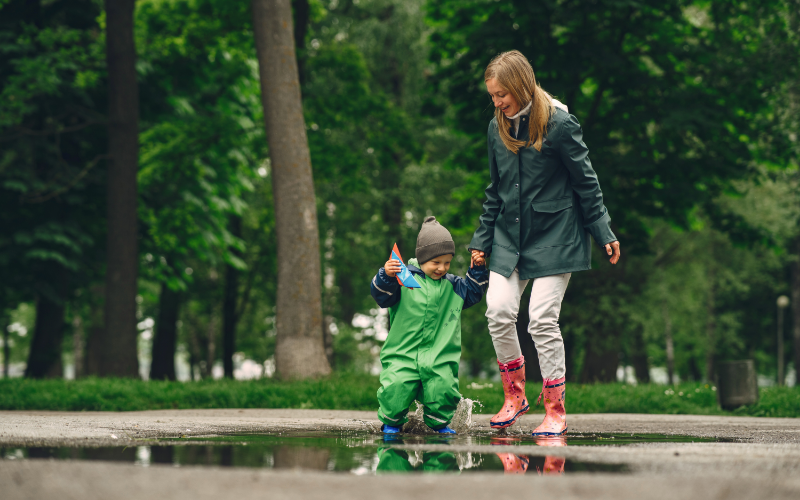In an increasingly urbanized world, the safety of women and children has become a pressing concern for municipal corporations globally. Women and children are particularly vulnerable to various forms of violence and exploitation, including domestic abuse, sexual harassment, trafficking, and street violence. The importance of ensuring their safety cannot be overstated, as it directly impacts the overall health, economic stability, and social harmony of communities. This article explores the significant risks faced by women and children, why it’s crucial for individuals and organizations to prioritize their safety and examines the diverse risk mitigation strategies employed by municipal corporations in cities around the world.
Understanding Women and Child Safety Risks
Women and children face a myriad of safety risks in urban environments:
- Domestic Violence: Many women and children experience violence in their own homes, often at the hands of family members.
- Sexual Harassment and Assault: Public spaces, workplaces, and even educational institutions can be sites of sexual harassment and assault.
- Human Trafficking: Cities can be hubs for human trafficking, where women and children are often victims of forced labor and sexual exploitation.
- Street Violence and Crime: Public areas may not always be safe due to issues like street crime, mugging, and harassment.
- Neglect and Abuse: Children, in particular, can suffer from neglect and abuse, both physically and emotionally, in various settings including schools and orphanages.
Importance of Safety for Women and Children
Ensuring the safety of women and children is fundamental for several reasons:
- Human Rights: Safety is a basic human right. Protecting women and children from violence and exploitation is a moral and legal imperative.
- Public Health: Exposure to violence and unsafe conditions has long-term negative effects on mental and physical health.
- Economic Impact: Safe environments enable women and children to contribute to economic activities, leading to overall societal growth.
- Social Stability: Protecting vulnerable populations fosters a sense of security and trust within communities, promoting social cohesion.
Risk Mitigation Strategies
Municipal corporations worldwide have implemented various strategies to mitigate risks and ensure the safety of women and children. These strategies include legislative measures, community programs, technological innovations, and infrastructural improvements. Below are detailed examples from ten cities, including Mumbai, that illustrate practical and effective approaches.
1. Mumbai, India
Mumbai has implemented several initiatives to enhance the safety of women and children:
- Nirbhaya Squad: This dedicated police squad focuses on preventing crimes against women and children in public spaces. They patrol high-risk areas and respond swiftly to distress calls.
- Safe City Project: Utilizing CCTV cameras and emergency response systems, this project aims to make public spaces safer. The city’s extensive CCTV network helps monitor and prevent incidents of harassment and violence.
- One-Stop Crisis Centers: These centers provide integrated support services for victims of domestic violence and sexual assault, including medical aid, legal assistance, and counseling.
2. New York City, USA
New York City has implemented comprehensive measures to protect women and children:
- NYC Domestic Violence Task Force: This task force coordinates efforts across various agencies to provide support to domestic violence victims, including emergency housing and legal services.
- Child Advocacy Centers: These centers offer a multidisciplinary approach to child abuse cases, providing medical care, counseling, and legal assistance in one location.
- Safe Horizon: The largest victim services nonprofit in the U.S., it offers 24-hour hotlines, emergency shelters, and advocacy for victims of domestic violence, child abuse, and human trafficking.
3. London, UK
London’s initiatives for women and child safety include:
- Project Guardian: A partnership between the British Transport Police, Transport for London, and women’s organizations, this initiative aims to reduce sexual offenses on public transport through increased police presence and public awareness campaigns.
- Operation Makesafe: This initiative trains hospitality and transport staff to identify and report signs of child sexual exploitation.
- Refuge: The largest domestic violence organization in the UK, providing emergency accommodation, community outreach, and legal advocacy for women and children.
4. Tokyo, Japan
Tokyo has focused on both technological and community-based approaches:
- Safety App for Women: This mobile application allows women to quickly send alerts to designated contacts and the police if they feel threatened. It also provides information on safe routes and nearby police stations.
- School Safety Patrols: Volunteer parents and community members patrol routes to and from schools, ensuring children can travel safely.
- Women-Only Train Cars: During peak hours, certain train cars are designated for women only to prevent sexual harassment.
5. Stockholm, Sweden
Stockholm’s approach includes policy and infrastructural improvements:
- Gender Equality Policy: This comprehensive policy addresses gender-based violence and promotes gender equality in all aspects of public life. It includes specific measures to protect women and children from violence.
- Safe Walkways: The city has redesigned walkways and public spaces with better lighting and visibility to reduce the risk of assaults.
- Child-Friendly Urban Planning: Playgrounds and parks are designed to be safe, inclusive, and easily accessible, promoting the well-being of children.
6. Toronto, Canada
Toronto has implemented a variety of community-focused initiatives:
- Women’s Safety Audits: These audits involve community members walking through neighborhoods to identify safety concerns and propose improvements, such as better lighting and emergency call boxes.
- Youth Outreach Programs: These programs engage at-risk youth in constructive activities and provide them with resources to stay safe and avoid violence.
- Safe City Mississauga: Although technically part of the Greater Toronto Area, this initiative focuses on crime prevention through environmental design (CPTED), aiming to make public spaces safer for women and children.
7. Sydney, Australia
Sydney’s initiatives for enhancing safety include:
- Domestic Violence Liaison Officers: These specialized police officers provide support and advocacy for domestic violence victims, helping them navigate the legal system and access resources.
- Safe Spaces: Designated areas in the city center where women and children can seek help if they feel unsafe. These spaces are staffed by trained volunteers and have direct communication lines to emergency services.
- Family and Domestic Violence Strategy: A comprehensive plan that includes prevention, early intervention, and support services for victims of domestic violence.
8. Cape Town, South Africa
Cape Town’s strategies are centered around community engagement and education:
- Women and Children Safety Forum: This forum brings together community leaders, law enforcement, and NGOs to address safety issues and develop collaborative solutions.
- Child Protection Week: An annual campaign to raise awareness about child abuse and exploitation, featuring educational programs and community events.
- Thuthuzela Care Centres: These centers offer a one-stop facility for victims of sexual violence, providing medical care, counseling, and legal assistance.
9. Buenos Aires, Argentina
Buenos Aires has focused on integrating safety into urban planning:
- Safe Cities for Women Program: This program includes initiatives to improve lighting in public spaces, increase police presence, and create safe routes for women and children.
- Neighborhood Safety Committees: These committees involve local residents in identifying safety concerns and working with municipal authorities to address them.
- Digital Mapping of Safe Spaces: An interactive map that shows safe spaces and resources for women and children in real-time, helping them navigate the city safely.
10. Amsterdam, Netherlands
Amsterdam’s approach includes technological innovations and community support:
- Women Safety Index: This tool assesses the safety of different neighborhoods based on factors such as lighting, police presence, and reported incidents of violence. It helps authorities prioritize areas for improvement.
- Community Support Networks: Local networks that provide support and resources for women and children facing violence, including shelters, counseling services, and legal assistance.
- Public Awareness Campaigns: These campaigns aim to change public attitudes towards gender-based violence and encourage bystander intervention.
Conclusion
Ensuring the safety of women and children is a multifaceted challenge that requires a coordinated effort from municipal corporations, law enforcement, community organizations, and the public. The examples from Mumbai, New York City, London, Tokyo, Stockholm, Toronto, Sydney, Cape Town, Buenos Aires, and Amsterdam illustrate a wide range of effective strategies that can be tailored to the specific needs and contexts of different cities. By prioritizing the safety of vulnerable populations, municipal corporations not only protect their citizens but also foster healthier, more vibrant, and inclusive communities. As cities continue to grow and evolve, these risk mitigation strategies will be crucial in creating safe and supportive environments for all.















